|
|
Top 10 Biggest Stadiums In The World
Here’s a more detailed overview of Top 10 of the biggest stadiums in the world

10 - Borg El Arab Stadium
Location: Alexandria, Egypt
Capacity: Over 86,000
Borg El Arab Stadium is one of the largest stadiums in Egypt and Africa. It has hosted various sporting events, including football matches and international competitions. The stadium’s construction was completed in 2007, and it has since become a prominent venue for football and other events in the region.
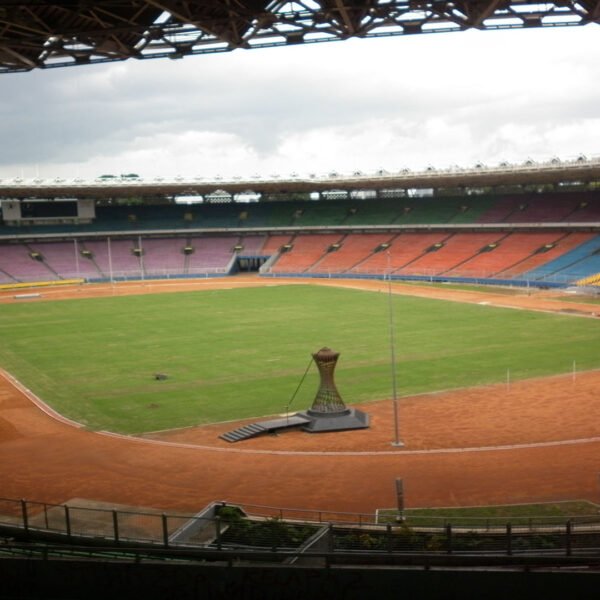
9 - Gelora Bung Karno Stadium
Location: Jakarta, Indonesia
Capacity: Over 88,306
Gelora Bung Karno Stadium is a historic venue that has hosted various events, including sports competitions, concerts, and national celebrations. It has been a significant venue for football matches, both domestic and international. The stadium underwent renovations in the past to meet international standards.
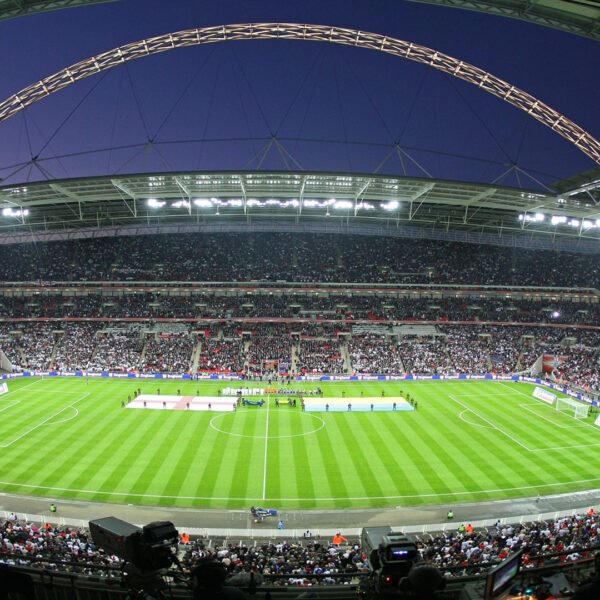
8 - Wembley Stadium
Location: London, England
Capacity: Over 90,000
- History: The original Wembley Stadium, often referred to as “The Twin Towers,” was opened in 1923 and hosted numerous historic events, including the 1966 FIFA World Cup final. The current stadium, known as the “new Wembley,” was opened in 2007, replacing the original stadium.
- Design: Wembley Stadium is known for its distinctive arch, which is visible across London. The arch is not only an architectural feature but also a structural support for the stadium’s roof.
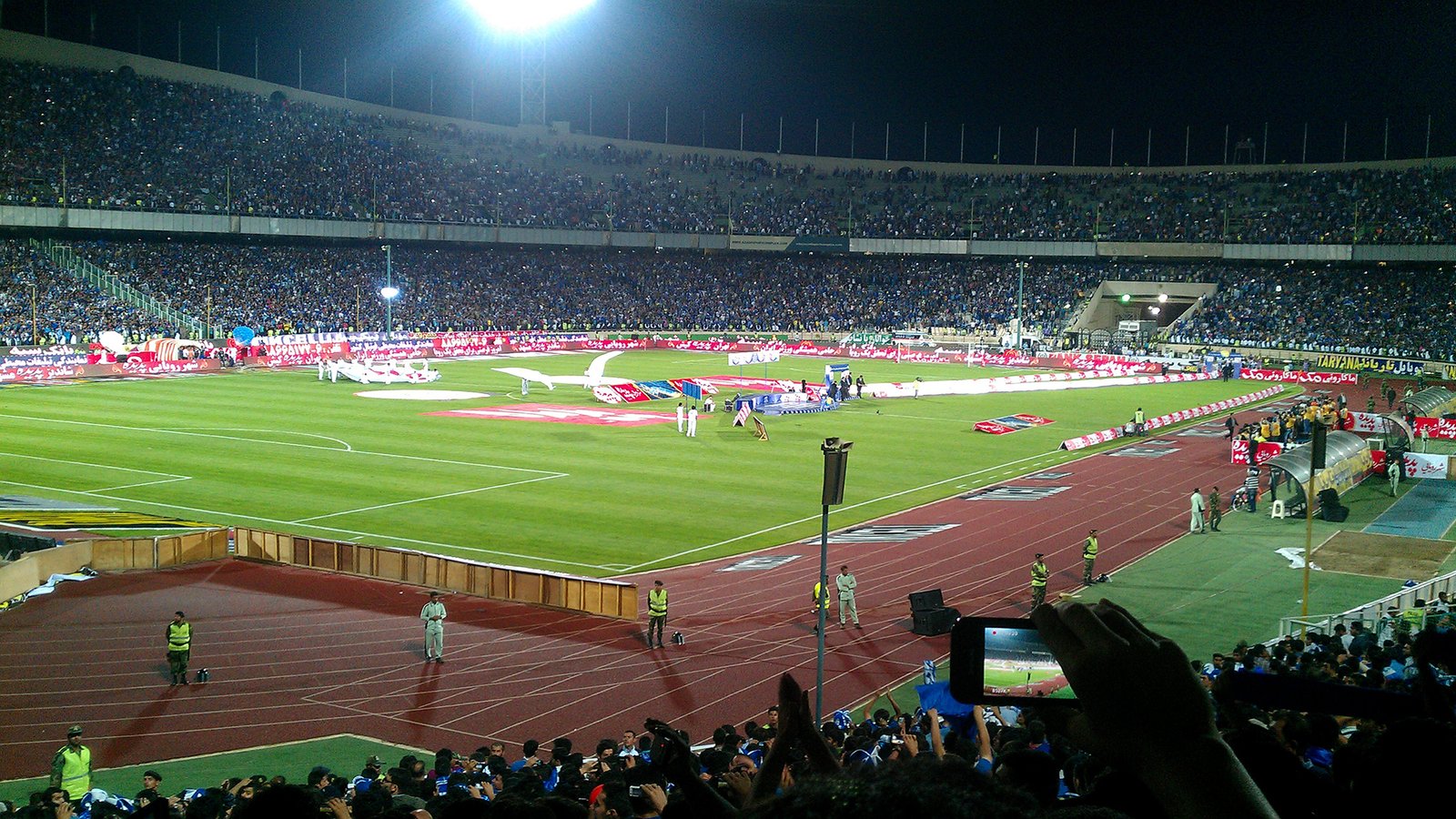
7 - Azadi Stadium
Location: Tehran, Iran
Capacity: Over 91,641
- History: Azadi Stadium was inaugurated in 1971 to host the 1974 Asian Games. The word “Azadi” translates to “Freedom” in Persian, symbolizing the freedom that Iran gained from foreign influence.
- Usage: The stadium is primarily used for football matches and serves as the home venue for the Iran national football team. It has also been the venue for domestic and international football competitions.
- Design: Azadi Stadium has a distinctive design with its elliptical shape and bowl-like structure. It underwent renovations and improvements over the years to meet modern standards.

6 - Soccer City
Location: Johannesburg, South Africa
Capacity: Over 94,736
- History: FNB Stadium was originally built in 1987 and underwent significant renovations for the 2010 FIFA World Cup hosted by South Africa. The renovations included an increase in seating capacity and modernization of facilities.
- Design: The stadium is known for its unique design, with a series of elongated panels resembling a traditional African cooking pot, known as a “calabash” or “melting pot.” The design is symbolic of unity and diversity in South Africa.
- Usage: FNB Stadium is primarily a football stadium and serves as the home venue for the South African national football team. It has also hosted major football events, concerts, and other entertainment activities.
- 2010 FIFA World Cup: FNB Stadium played a crucial role in the 2010 FIFA World Cup, hosting the opening ceremony and the final match between Spain and the Netherlands.
- Nickname: The nickname “Soccer City” gained prominence during the World Cup and is often used colloquially to refer to FNB Stadium.
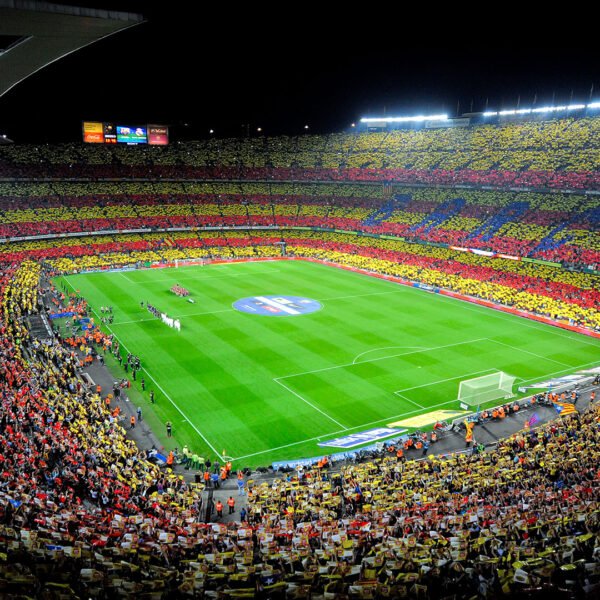
5 - Camp Nou
Location: Barcelona, Spain
Capacity: Over 98,787
Home Teams: FC Barcelona
Overview: Camp Nou is the largest stadium in Europe and the home of FC Barcelona. It has a rich history and is known for its electrifying atmosphere during matches.
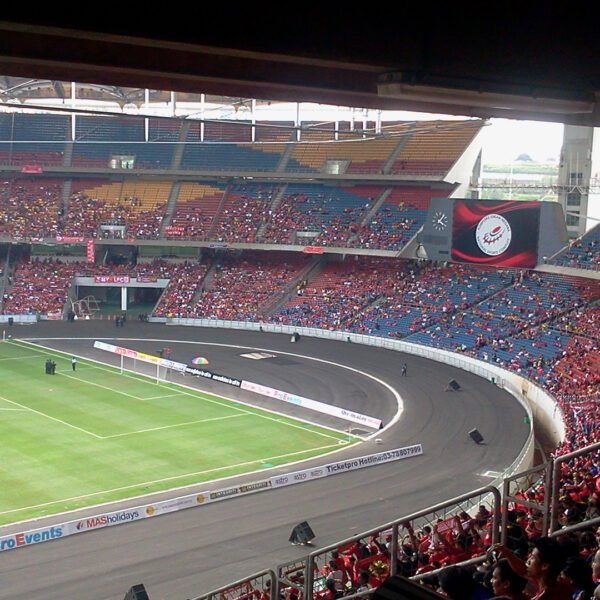
4 - Bukit Jalil National Stadium
Location: Kuala Lumpur, Malaysia
Capacity: Over 100,200
- History: The stadium was completed in 1998 to host the Commonwealth Games that took place in Kuala Lumpur that year. It has since become a significant venue for various sports events and concerts.
- Usage: Bukit Jalil National Stadium is a multipurpose stadium used for a variety of events, including football matches, athletics, concerts, and other entertainment activities. It serves as the home venue for the Malaysian national football team.
- Design: The stadium features a bowl-like structure with a distinctive blue roof. The design is meant to provide an unobstructed view for spectators and to create an aesthetically pleasing environment.
- Major Events: Over the years, the stadium has hosted numerous major events, including the Commonwealth Games in 1998, the ASEAN Para Games, and various international football matches.
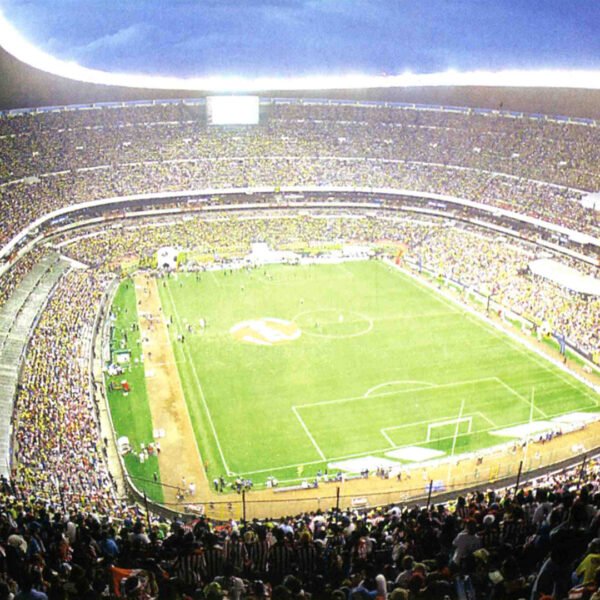
3 - Estadio Azteca
Location: Mexico City, Mexico
Capacity: Over 105,064
- History: Estadio Azteca is one of the most iconic football stadiums in the world. It was inaugurated in 1966 and has since been the home venue for Club América, one of Mexico’s most successful football clubs. The stadium has also hosted numerous international competitions and events.
- Significance: Estadio Azteca is the only stadium in the world to have hosted two FIFA World Cup final matches. The finals took place in 1970 and 1986, with Brazil winning against Italy in 1970 and Argentina winning against West Germany in 1986.
- Design: The stadium has a distinctive design with a seating capacity that has varied over the years due to renovations. It is known for its circular shape and the iconic concrete ring that encircles the stadium.
- Usage: In addition to football matches, Estadio Azteca has hosted various events, including concerts and other sports competitions. It is a venue that holds historical significance in the world of football.
- Renovations: Estadio Azteca has undergone several renovations and upgrades to maintain modern standards and enhance the overall spectator experience.
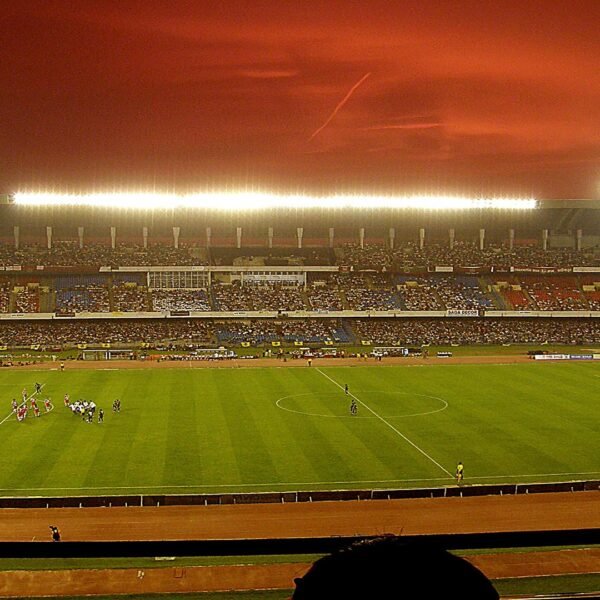
2 - Salt Lake Stadium
Location: Kolkata, West Bengal, India
Capacity: Over 120,000
- History: Salt Lake Stadium was inaugurated in January 1984 and has since been one of the largest stadiums in India. It has undergone renovations and upgrades over the years.
- Usage: The stadium is primarily used for football matches and has been the home venue for several football clubs, including the Kolkata-based teams Mohun Bagan A.C. and East Bengal F.C. It has also hosted numerous international and domestic football competitions.
- Design: Salt Lake Stadium has a bowl-like structure and is known for its distinctive orange, yellow, and blue seats. It has an athletics track surrounding the football field.
- Events: The stadium has hosted various sports events, including football matches, athletics competitions, and cultural events. It was a venue for the 2017 FIFA U-17 World Cup hosted by India.
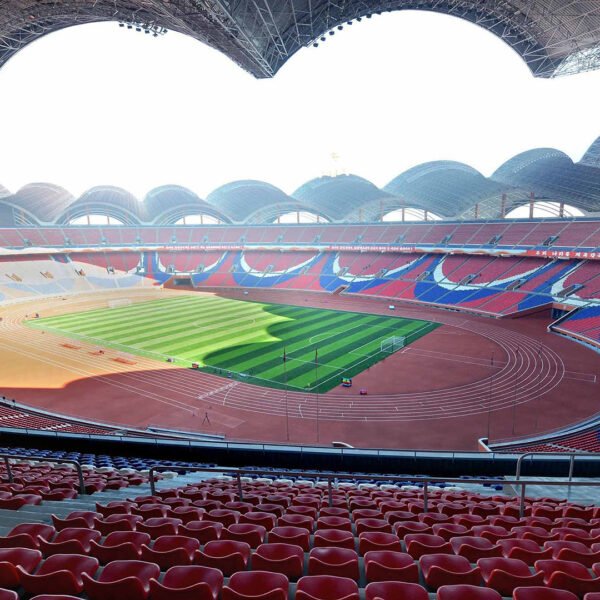
1 - Rungrado may Day Stadium
Location: Pyongyang, North Korea
Capacity: Over 150,000
- Construction: The stadium was constructed in 1989 and officially opened in time for the 13th World Festival of Youth and Students. It is named after International Workers’ Day, which is celebrated on May 1st.
- Size: Rungrado May Day Stadium is one of the largest stadiums in the world in terms of seating capacity. It has the capacity to accommodate a massive audience, making it suitable for various events.
- Purpose: While the stadium is primarily used for football matches, it is a multi-purpose venue that has hosted a wide range of events, including athletic competitions, mass games, and cultural performances.
- Design: The stadium has a unique design, with a ring-shaped structure and a large roof that covers the seating area. It also features a 197,000-square meter playing field.
- Mass Games: Rungrado May Day Stadium is famous for hosting Mass Games, which are large-scale performances involving tens of thousands of participants. These events often showcase synchronized movements and are known for their grandiosity.
















































